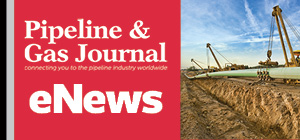May 2025, Vol. 252, No. 5
Editor's Notebook
Midstream's Talent Crisis: Can Mentorship and Tech Bridge the Workforce Gap?

By Michael Reed, Editor-in-Chief
(P&GJ) — As I’m sure you are all already acutely aware, we’re getting older. I know, that was hardly a cheery opening remark for a column, but it was necessary, nonetheless. The “we” that I refer in this instance is people working in the midstream sector.
Our aging workforce – data shows as much as 25% of those involved in the construction of pipelines is past the age of 55 – is rapidly approaching retirement in mass. This, of course, has been a substantial challenge to the industry for a while now, but as they say, time marches on and the dilemma of what to do only worsens.
The challenge of this is compounded by the additional caveat that many of these employees will be departing without having had time, or the forum, to share their specialized skills and hard-earned institutional knowledge.
It’s the type of institutional “brain-drain” that can – and I’m sure has – increased projects costs and led to delays. Face it, less experienced workers cannot be expected to match the productivity or resourcefulness of their more experienced counterparts.
Additionally, in its efforts to reverse this trend, the industry continues to struggle in its efforts to attract younger workers, partly due to perceptions of construction work as too physically demanding, therefore less appealing than other careers. This makes it difficult to replenish the workforce as older employees retire.
So, what is the solution? I’m not sure anyone knows exactly, but I do know of a few methods that I’ve become aware by visiting with operators, contractors and associations and their members, such as INGAA, AMPP, PLCA and APCA.
Among the most discussed ideas has been the need to the transfer of knowledge from older to younger employees through mentorship and documentation of best practices.
Some companies have begun formalizing these transfer programs to ensure that this occurs. In these cases, senior employees are encouraged to mentor students and younger workers, often in collaboration with educational partners. This helps transfer institutional knowledge and supports both succession planning and student development.
Similarly, companies have increasingly partnered with trade schools, vocational programs and universities to help build talent pipelines. These collaborations often include internships, apprenticeships and work-study programs, which will to expose students to construction careers and provide hands-on experience.
This type of “earn-and-learn” model can be especially effective in attracting young people to skilled trades, such as welding, because it provides access to career pathways and, obviously, money.
Some companies have also begun to work closely with schools in an effort to co-design curricula that will align with midstream and construction industry needs, ensuring that students are trained in both technical and soft skills required for pipeline construction and operations.
These collaborations, include assisting with program design and, in some cases, appointing industry professionals as faculty members or guest instructors. The companies may provide financial or in-kind support to educational programs, such as funding for equipment, sponsoring scholarships or offering access to worksites for training purposes.
In some cases, this process has started as early as middle schools in an effort to show youngsters that there are career opportunities available in pipeline construction. Among the activities provided are facility tours, career fairs and workforce development programs.
There are other methods being tried out as well. Obviously, not all of these ideas are going to be practical for everyone.
Some companies, for example, have adopted certain AI tools, robotics and applicable forms of automation, to assist in offsetting some labor shortages and reducing reliance on manual labor – an attraction for many young job-seekers.
Along those lines, wellness programs and initiatives have been introduced at some companies, including ergonomics tools and health screening initiatives. Additionally, more equipment designed to reduce strain and prevent injuries have been implemented.
Some companies have also experimented with changing their workplace culture in ways that would be more appealing to younger workers. These include implementing more flexible schedules – where possible – and allowing remote work options. This has not only attracted some younger employees who prioritize work-life balance but also helped to accommodate the needs of older workers.
Change, obviously, is often uncomfortable, and frequently it’s more than a little messy, but as the saying goes, “Change is inevitable.” In this case, it is also vitally necessary.





Comments